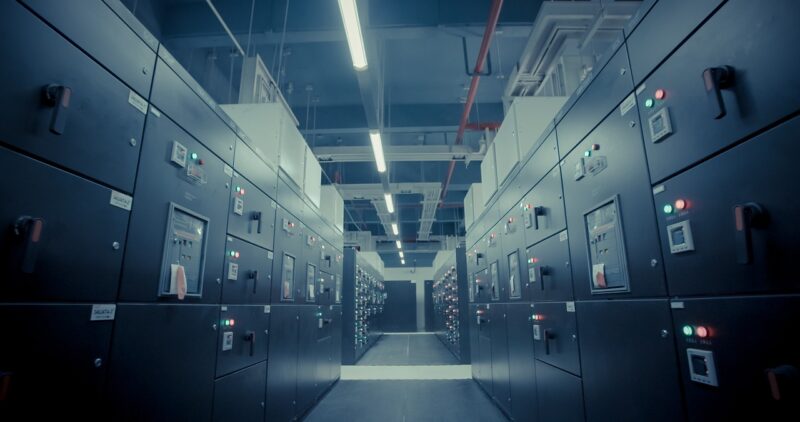Understanding the Environmental Impact of AI and Data Centers
November 11, 2024

As the world becomes increasingly reliant on technology, the role of artificial intelligence (AI) and data centers has never been more crucial. Enterprises large and small are leveraging AI to enhance their operations, improve customer experiences, and drive innovation. However, this rapid advancement raises an important question: What is the environmental impact of AI and the data centers that support it? In this article, we’ll explore the ecological consequences of AI, the energy consumption of data centers, and how we can mitigate their effects on our planet.
1. The Growth of AI and Its Environmental Footprint
AI is embedded in many everyday services, from personalized recommendations on streaming platforms to voice recognition systems in smartphones. While the benefits of AI are vast, it’s essential to consider the energy demands placed on data centers that power these technologies.
The training of AI models requires an immense amount of computational power. Research has indicated that training large AI models can consume the same amount of energy as several households over the course of a year. For instance, a breakthrough model in natural language processing (NLP) like GPT-3 requires significant energy resources to create and maintain, representing a challenge in terms of sustainability.
Moreover, this increasing demand for computation is driving a surge in the number of data centers being built globally. As of 2023, it’s estimated that data centers account for about 2% of the world’s total energy consumption. As AI becomes integrated into more sectors, this figure is likely to rise unless action is taken to improve energy efficiency.
2. Energy Consumption of Data Centers
Data centers operate 24/7 to ensure that data is accessible at any time. This constant operation demands vast quantities of energy, frequently derived from non-renewable sources. Here are several significant aspects to consider regarding their energy consumption:
- Cooling Requirements: The thermal output from servers can be extreme, requiring robust cooling systems to maintain operational efficiency. These systems consume a remarkable amount of energy. In fact, cooling can account for up to 30% of a data center’s total energy use.
- Renewable Energy Integration: Some data centers have begun transitioning to renewable energy sources. Companies like Google and Microsoft are investing heavily in wind and solar power, committing to sustainability initiatives that could shape the future of data center energy consumption.
- Energy-efficient Infrastructure: Innovations in server and cooling technology are being developed to reduce energy consumption. Strategies such as virtualization, server consolidation, and dynamic power management can help achieve lower energy use without compromising performance.
As AI applications continue to evolve, it’s essential to rethink how data centers are powered to minimize environmental impact.
3. The Carbon Footprint of AI Models
A growing body of research is attempting to quantify the carbon footprint of AI models. A study by scientists at the University of Massachusetts revealed that training a single AI model can emit as much carbon as five cars over their lifetimes. This insight underscores the urgent need for an energy transition in AI development.
Factors contributing to this carbon footprint include:
- Data Center Location: The geographical location of data centers can affect their carbon output significantly. Data centers situated in regions dependent on fossil fuels will have higher emissions than those powered by reliable renewable sources.
- Model Complexity: The more complex the AI model, the more data and computation it requires. This can lead to a higher energy and carbon use during both training and deployment phases.
- Long-Term Use: If an AI application is in use for an extended period, its cumulative energy usage can be staggering, contributing to increased emissions over time.
Understanding and measuring the carbon footprint of AI models is crucial for promoting sustainable practices within the tech industry.
4. Mitigating the Environmental Impact of AI and Data Centers
While the environmental impact of AI and data centers is evident, several measures can be undertaken to mitigate this challenge.
- Adopting Green Technologies: Data centers should adopt technologies that improve energy efficiency. This can include utilizing advanced cooling methods like liquid cooling or leveraging AI itself to optimize energy use in data center operations.
- Utilizing Renewable Energy Sources: One of the most effective ways to reduce the carbon footprint is to power data centers entirely with renewable energy. This requires commitment from companies to invest in renewable energy infrastructure and purchase green energy certificates for the energy they do consume.
- Optimizing Model Training Techniques: Researchers are exploring ways to make AI training more efficient, including transfer learning and federated learning. These techniques not only optimize resource usage but also reduce the carbon footprint associated with developing AI applications.
- Promoting Sustainable AI Practices: Share best practices across the industry. By fostering a culture of sustainability in AI development, organizations can collectively work toward reducing their environmental impact.
Both tech companies and policymakers have a role in ensuring that the future of AI is sustainable, balancing innovation with environmental responsibility.
5. Conclusion: The Future of AI and Environmental Responsibility
The environmental impact of AI and data centers cannot be overlooked in our quest for progress. As we continue to innovate, embracing AI technologies should be done with an acute awareness of their ecological consequences. By prioritizing sustainability, harnessing renewable energy, and optimizing data center operations, we can mitigate their environmental impact while reaping the benefits of artificial intelligence.
As the industry progresses, it’s crucial for all stakeholders to engage in conversations about responsible technology use and its consequences on the planet. Together, we can innovate responsibly, ensuring a balance between advancing technology and safeguarding our environment for future generations.








